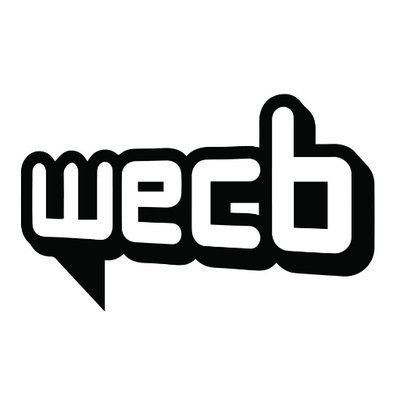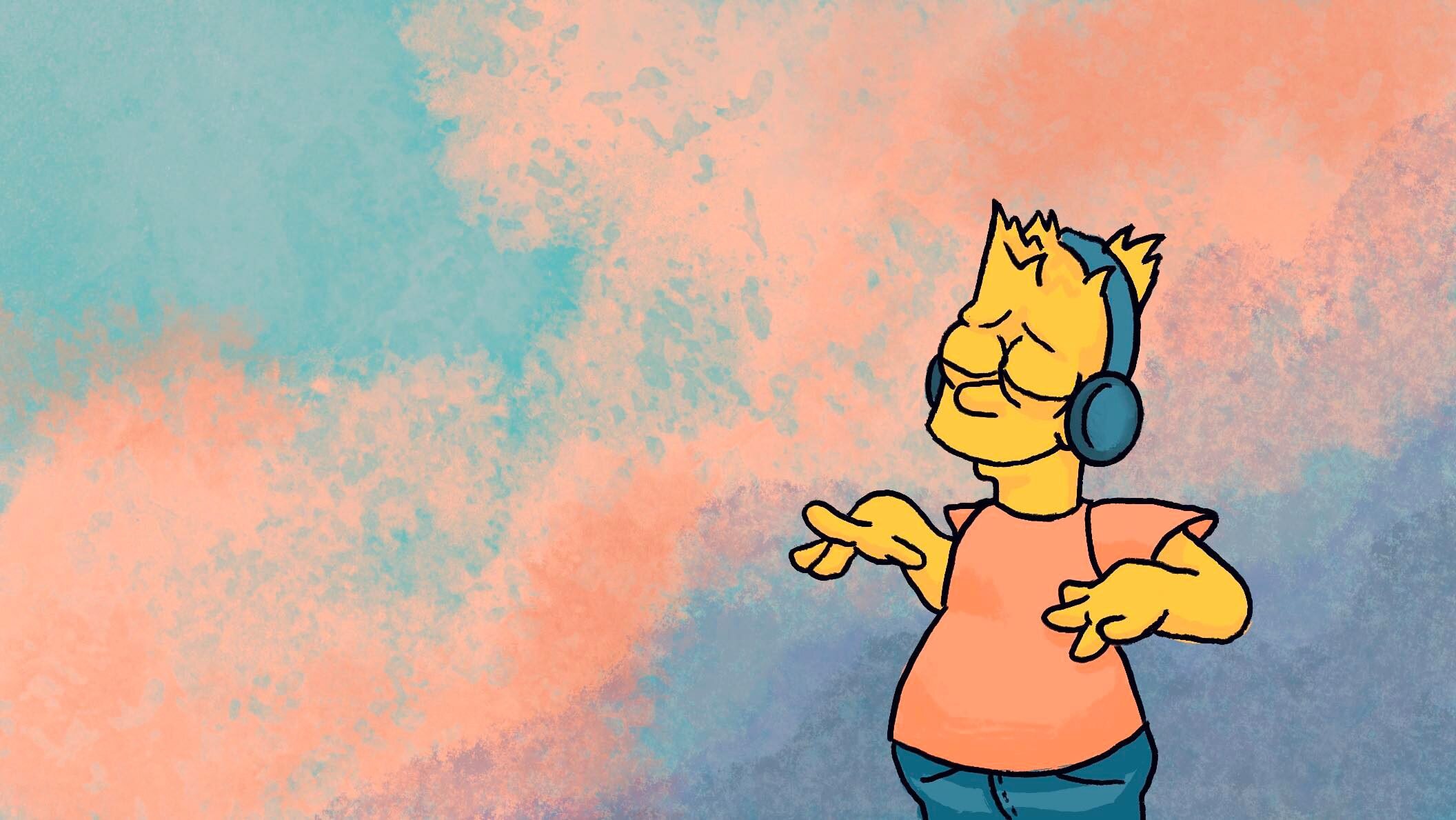What’s Up with ‘Slowed + Reverb’ Music?
Artwork by Ellie Bonifant
by Kyle Bray
Anyone who has browsed for music on YouTube, including myself, has surely run into this trend before: it’s a music video for a popular song, but instead of showing a clip of the artist or the music video itself, it’s a thumbnail of some animated scene—generally the Simpsons or an anime. The video’s title has the name of the song and the artist with the words “slowed + reverb,” normally written in some form of calligraphy. The video itself is a lo-fi edit of the animated clip, drenched in an ’80s-esque aesthetic. The music matches the video’s title but it’s been, well, slowed down and is dripping in reverb.
These videos are all over YouTube. A quick search of the phrase “slowed and reverb” garners thousands of results that all follow the same aesthetic. The most viewed result, a video for a song called “Sunset Lover” by Petit Biscuit, has 7.8 million views, which is more than the official music video has on the artist’s YouTube page. Channels dedicated to these videos have hundreds of thousands of subscribers and post multiple times a week. The videos aren’t even linked to one specific genre—even Beethoven’s “Moonlight Sonata” has a ‘slowed and reverb’ version.
I am not slow, these girls just want me ’cause I got the dough.
This musical phenomenon has taken the Internet music community by storm, but where did it come from? And why do people like listening to a simplistic and low effort remix of a song they’re already familiar with?
This style of music has roots in another popular subgenre of music from the internet: vaporwave. Vaporwave is a subgenre of electronic music that grew into mainstream popularity in the 2010s. Its lo-fi and ’80s/’90s aesthetic combined with minimalist production took off in a decade defined by nostalgia.
One of the most popular vaporwave songs during its peak of mainstream appreciation was the second track off of an album called Floral Shoppe (2011) by Macintosh Plus. This track embodies a lot of what vaporwave was truly about. It is carried by synth lead and drum machine, caked in reverb, and combined with pitched down vocals. The vocals aren’t original, though, and neither is the instrumental. The song itself is built around a sample of a 1984 song called “It’s Your Move” by Diana Ross—if one listens to this song slowed down to about half the original speed, the two are eerily similar.
Kerry Ferrell, a student from Emerson College who listens to and enjoys this style of music, said he, like many others, first discovered the slowed and reverb style through the magic of the YouTube algorithm.
“I think the algorithm discovered I was into production and remixes,” Ferrell said. “Chopped and screwed [music] is probably the closest thing to the slowed and reverb thing I’m into now. I found Travis Scott back when Owl Pharaoh dropped and he’s just got that Houston sound. From there, you have to listen to chopped and screwed.”
The chopped and screwed genre was created by an artist named DJ Screw, a central figure in ‘90s hip hop and the Houston rap scene. With this genre, a DJ would slow down a rap song and mix in beat switch-ups and record scratches to give already well-known songs a new and refreshing feel. In 2017, Sheldon Pearce of The Guardian wrote that “for [DJ] Screw, slowing a record down allowed it to breathe, bringing new context to what was rapped and adding a new tint to the catalogs of the rappers he liked to spin.” Chopped and screwed music, with it’s slowed and glitchy edits, is the grandfather to genres and styles like vaporwave or slowed and reverb.
In many ways, slowed and reverb is almost a modern take on the chopped and screwed genre. However, the big difference between the two is that while chopped and screwed music requires a unique form of production and editing, slowed and reverb music can be whittled down to simply lowering a track’s beats per minute and dripping it in reverb. There’s even a website where one can upload an audio file and instantly get a slowed and reverb remix of it which means that it does not take much, or any, musical talent to produce this music—which is not necessarily a bad thing.
While this style of remixing is quite simple, it is incredibly accessible and videos for songs that have been slowed and reverb still have millions of views and streams all over the Internet.
“One [appeal] to me is that I can pull apart the production a little bit more and focus specifically on certain melodies, basslines, or harmonies,” Kerry Ferrell said. “It’s also just really relaxing. You can take an uptempo song like [Tame Impala’s] ‘Let It Happen’ [and] with the slowed and reverb version, you’re able to count the beats more precisely and it’s a slow-your-heart-rate type of thing.”
The relaxing appeal of slowed and reverb music is almost undeniable. It helps create a spacey atmosphere that can surround the listener. The moment that this style really clicked for me was, funny enough, by accident. I had just bought Beach House’s Bloom on vinyl and went home to play it, not knowing that it was meant to be played at 45 rpm. I accidentally played it at 33 rpm, which produced a sound similar to that of a slowed and reverb song and I found myself taken aback. It opened up a whole new way to listen to one of my favorite songs and albums to the point where I listened to the whole A-side of the album at 33 rpm my first time through.
Both pitch and tempo have been lowered to 74.074 % from the original. (Or the result you get from playing a 45 RPM vinyl at 33 1/3 RPM speed.) —– Myth Bea…
While the execution of a slowed and reverb track may be simple, there’s something special about listening to some of your favorite tracks in this style. It brings out something new from each song and helps take the listener to a different place. This form creates a unique and relaxing atmosphere and helps highlight production elements that might otherwise not be as clear. When done well, the slowed and reverb method can help listeners rediscover their favorite songs in a brand new way.


It’s chopped and screwed. Not inspired by. Chipped and screwed isn’t the grandfather. It is! All this talkin to justify stealing a genre and rebranding it. Call it what it is! Rap is rap. Hip hop is hop hop. Chopped and screwed is chopped and screwed.
You need to curb your moral outrage, buddy: "Stealing a genre and rebranding it" is exactly what hip hop artist do. Hip hop relies on samples, and samples are stolen music–or to put it politely, samples are pieces of music borrowed from other artists and used to make a new piece of art. I don’t have a problem with sampling morally or artistically as long as the original artist is reimbursed. But I do have a problem when somebody thinks it’s OK for certain people to "culturally appropriate" and not OK for others.
Stop. Just Stop.
Listen and learn. Seriously, do your research before attempting to "rebrand" Here’s a "fun"way to learn history.
https://www.youtube.com/watch?v=XaOSg41rlyA&feature=share&fbclid=IwAR1qgeHu8tX0L-rsfOX6ik_sTTo4QgeK6fcDsF5M_wmCw1lH7eg7U7QGebg&ab_channel=KevOnStage
??????????
some of this is incorrect but thanks for the lesson
Dang who is. Here in 2021 btw tiktok is robloxvid60 heheheheh roblox is hehethehehe1
"And why do people like listening to a simplistic and low effort remix of a song they’re already familiar with?" Lol just stop. It actually takes a lot more effort than you think to make this kind of music so just stop. Do your research better next time! and for anyone who likes music like this, go listen to the artist sad boy with a laptop. 🙂
Overall though, it IS pretty simple compared to other forms of editing songs? And I’m speaking as someone who worked professionally editing both audio and visual. Honestly Idk if you finished the article or are just running with a single sentence you didn’t like. The author likes slowed + reverb, ends up discussing why they like it. Also, the research on the time trends is 100% well done and accurate? This is an article addressing multiple views, dude.
Slowed and reverb is simplistic and low effort lol. Chopped and screwed takes a lot more effort to make
Remember when nightcore ruled youtube XD